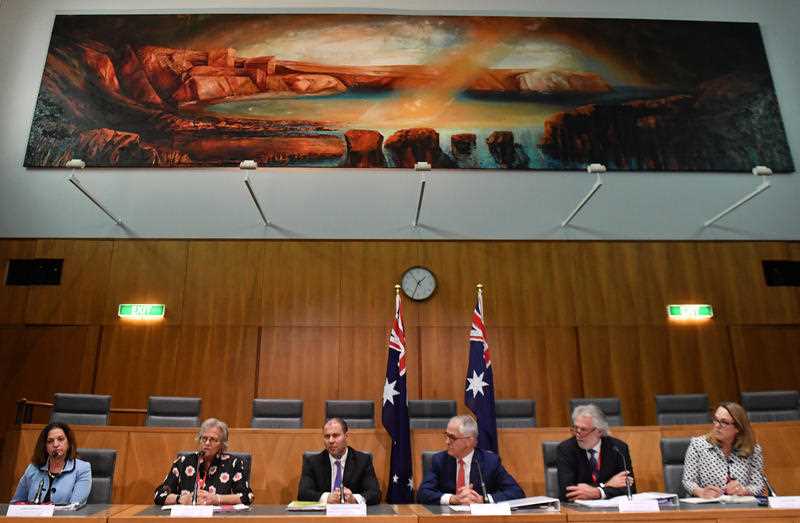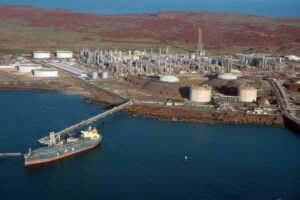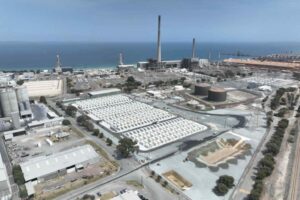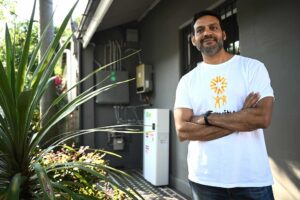
On the face of it a twin-pronged system focusing on reliability and environmental outcomes could have appeal. But we just don’t know because the details of Malcolm Turnbull’s National Energy Guarantee (NEG), and even the basics of how it will work, have not been explained.
As one clean energy advocate said on Tuesday: “We’re still trying to understand whether we love or hate the NEG”. Part of that hesitation is based around the oft-made assumption that it might be better to have something, rather than nothing. But that remains to be seen.
The mainstream media certainly embraced it, but analysts see red flags all over the place – it is potentially bad news for renewables, bad news for emissions, and bad news for prices. It is potentially Turnbull’s energy trilemma turned upside down.
Most of all, the proposal appears to be the most ill-considered, poorly detailed and potentially useless policy that anyone can remember – the work of Australia’s so-called “energy mafia” hungry to defend the power of the incumbent oligopoly, commercial interests and their ideology.
Here’s a list of reasons why people should be concerned.
Did anyone tell the Coalition party room that this is a de-facto carbon price?
Energy analysts say it is a little early to tell, because there are no actual details, but it looks variously like a emissions intensity scheme, which Turnbull has been pushing for in various forms since 2008, or a mix of a baseline and credit scheme and a capacity market.
Market analysts Reputex describe it is a de-facto carbon price. “The attributes of the NEG will, in effect, establish a de-facto price on greenhouse gas emissions from the power sector, and provide a robust source of demand for Australian Carbon Credit Units (ACCU),” it says.
Little wonder, then, that Tony Abbott is not impressed. “Tony is a conscientious objector,” says energy minister Josh Frydenberg. But he’ll apparently hold his tongue for the moment.
But this carbon price will be invisible
Not only will it be a de-facto carbon price, it will also be invisible, because the “market” will be hidden by the complexity of energy price caps and hedges. That is a major concern.
There is absolutely no transparency in this market, which is why the big gen-tailers are in favour of it, because it hands them absolute control and discretion over the market and investments.
The scheme will, ostensibly, be monitored by the same useless regulators that allowed the networks – and latterly the generators and retailers – to gouge consumers over the last 10 years, and enabled them, more recently, to “play” the market for certificates in the renewable energy target.
It’s hardly reassuring for the consumer. The power of the energy oligopoly is simply reinforced.
The emissions target are manifestly inadequate
The emissions reduction target that the ESB was asked to work with – a 26 per cent cut in electricity emissions from 2005 levels by 2030 – is manifestly inadequate, for even Australia’s current climate commitment (it loads a lot of effort on to other sectors), but also to the ultimate goal of capping global warming well below 2°C.
Even Origin Energy recognises this, noting the cavernous gap between the Paris target and the current emissions trajectory, a trajectory made worse by the government’s hint that any emissions targets will be “back-ended” to 2030.
But as with Finkel, the low target might be deliberate, so as not to scare the horses and the climate deniers. (Note the IPA came out again on Tuesday and argued for no emission cuts).
Had Finkel couched his review in terms of what needed to be done, like the Climate Change Authority, his conclusion would likely have been a renewables share approaching 70 per cent by 2030, not the 42 per cent in his document.
And those emissions targets may have been largely met, already
The big question is how much new investment the scheme will pull in. Not a lot. That’s because, as David Leitch tells us, the current build-out of renewables under the renewable energy target, and the closure of the Hazelwood power station has already got the country much of the way there.
Leitch says that, on his numbers, only around 4,000MW of new large-scale renewables would be required between 2020 and 2030 to meet the current emissions target. That’s not much. The scheme would only work if there were serious reduction targets. And he doesn’t hold out much hope of that, in the current political environment.
Worse, he notes of Snowy 2.0: “(The government) is funding a very expensive project designed to supply a reliability rule that they have expressly forced onto retailers. In essence it is making a rule that requires retailers to buy the output from its own project. The mafia would approve.”
It could mean zero additions to large-scale renewables
Even Leitch’s analysis could be optimistic. The advice from the ESB suggests a range of 28-36 per cent renewables by 2030, and 18-24 per cent wind and solar share. This estimate includes rooftop solar, according to ESB chair Kerry Schott.
Given the anticipated, and one would suspect, unstoppable uptake of rooftop solar by households and businesses in response to high power prices that are not coming down, it means that at the bottom end of their range, the ESB is predicting virtually no new wind and solar projects in the country between 2020 and 2030.
And given that anticipated surge in rooftop solar, even the top end of the forecast allows for little in the way of new renewables, which seems extraordinary given the recognition by Schott and even the Coalition about the falling cost of wind and solar.
Fancy investing in a Peru landfill gas mine rather than an Australia wind farm?
The market component even has an international flavour. The advice from the ESB includes the possibility of retailers meeting their environmental obligations through international credits.
That likely means that rather than investing in an Australian wind or solar farm, the likes of Origin, AGL and EnergyAustralia could invest in a third-world project that generates cheap credits – like the Peruvian landfill gas plant and other facilities supported by the UN’s Clean Development Mechanism that small retailer PowerShop invests in so it can claim to be “carbon neutral”.
And it may not lead to investment certainty
Many are defending the NEG on the basis that any sort of policy is better than nothing. That reminds us of Turnbull’s last major achievement, the bastardisation of the CPRS before he was rolled by Abbott in 2009.
Morgan Stanley’s Rob Koh notes that, on the detail presented so far, the government will set emissions reductions pathway (rather than that being done by an independent body).
“The risk of political interference in the targets may reduce investor confidence in the scheme, particularly where there is no explicit linkage to Australia’s Paris Agreement commitments,” Koh writes. And because no one else has done this sort of scheme, it will inevitably have to be fine-tuned.
The price cuts are trivial, so consumers will find own way with solar and storage
The promised price reductions of around $100 a year have not been modelled, may be as low as 50c a week, and may just be a figment of Pierce’s imagination. It just hasn’t been modelled. Given the absurdly high price of electricity in Australia and the competing forces of rooftop solar and storage, that offers nothing to consumers.
“Regardless of what Turnbull and his mates decide, shaving between $25-$100 off someone’s bill is meaningless compared to the difference that behind the meter PV, storage and demand management can make,” says Adrian Merrick from EnergyLocals.
“While they focus on gaining votes from policy headlines, we’re quietly making the change a reality.” Tomorrow, on One Step Off The Grid, another example will be published of how consumers will do this.
What does it mean for the states?
No one is too sure. The Labor states have targets ranging from 40 per cent by 2025 (Victoria), to 50 per cent by 2030 (Queensland and the NT) and 100% by 2020 (ACT). South Australia is already at more than 50 per cent.
But after what has been described as a testy phone hook-up between Frydenberg and the state ministers, the states say they have been gobsmacked by the lack of detail, and the apparent back-flip by the Coalition, who having once damned the states for “going it alone” now want them to do the heavy lifting.
The Coalition needs state approval for the changes, because they involve alterations to the market rules.
A victory for the energy mafia?
This is the question everyone is asking. An eight-page letter with no detail and some fuzzy ideas, ostensibly from the Energy Security Board, comprising two new independent directors (Schott and Clare Savage) and the heads of AEMO, AEMC and the AER.
This is the sort of scheme that the energy oligopoly and their attendants in various consultancies and think tanks (some call them the energy mafia) have been busting to do for years. See our first point about the lack of transparency in the markets and the control by the incumbents.
And all fingers are pointing to John Pierce, the head of the AEMC, the rule-maker that has fought so hard against renewable targets, and rule changes, and has been a staunch defender of fossil fuel markets.
He appears to have seized an opportunity, with impeccable timing, and was clearly joined by key players in the major utilities who have been quick to give their imprimatur. There is a body of opinion in the energy market that Pierce has outflanked his rivals and peers.
It was noticeable that Turnbull deflected to Pierce during the various briefing – indeed, Turnbull has been using the heads of the various agencies as some sort of human shield to deflect attacks, defending the policy’s expediency through their “expertise”.
Schott further added to this view of the role of Pierce, suggesting it was the culmination of a “year of work”. But the ESB only met for the first time a month ago. And the only member of the ESB “around for years” is Pierce.
And the states found it passing strange that the ESB, which is supposed to be part of COAG, had made no approach to the states. “There are real questions about the process,” said ACT minister Shane Rattenbury.
Schott’s quick change on renewables
The fact that the heads of the other agencies were willing to put their names on such a vague document has surprised many in the industry, particularly in the case of Schott, admired for being a no-nonsence administrator.
Here, Schott has signed her name to a document apparently condemning renewables to zero or limited growth in the next decade. Yet it was just a few months ago that Schott was chair of Transgrid, a major transmission company that said decarbonising the grid with a very high penetration of renewables was not only doable within a few decades, but would also lower prices.
See this story Transgrid: 100% renewables is feasible and affordable. That’s not the story that the ESB is telling us now. What do they know that the boffins at the networks and the CSIRO do not?
Is AEMO confusing the role of system security and dispatchability?
The role of AEMO is also curious. On Tuesday at the behest of the prime minister, AEMO CEO Audrey Zibelman talked about the recent interventions by AEMO into the South Australia market, which included limiting the amount of wind if not enough gas generation was present.
But this immediately raised questions about what these interventions – largely about the level of “fault current” – have got to do with dispatchability and the recommendations of the ESB. The CEC’s policy wonk, Tom Butler, tweeted this after the Tuesday press conference:
Wind constraints in South Australia have nothing to do with reliability yet they are being used to justify the #NEG reliability reqs
— Tom Butler (@TommiiButler) October 17, 2017
There is normally plenty of dispatchable generation in South Australia, it’s just that the plant operators have to be given a boot up the backside by the market operator to switch them on. System security is one thing, dispatchability is another. It is not clear how the NEG would address that.
We asked AEMO and were advised to talk to the ESB. But, we said, the ESB is just the heads of the agencies, of which AEMO is one. Finally we got a reply:
“The NEG provides the opportunity to signal what the system requires to ensure reliability. AEMO has been consistent in its position that we require a portfolio of resources that meet all the objectives (such as frequency, inertia, voltage control etc) to maintain power system security and reliability.”
They suggested we talk to Schott. But Schott’s office said that wasn’t possible until next week at the earliest.
Twitter @gilesparkinson









